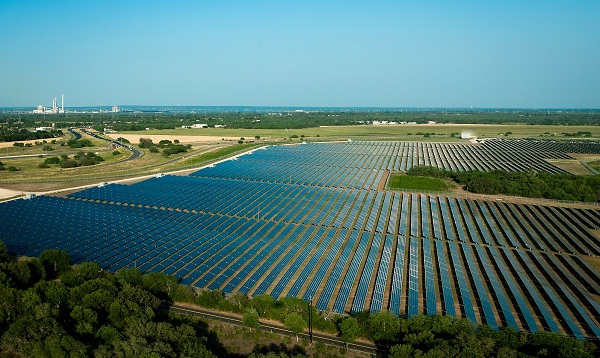Texas blows away the rest of the country on wind power, but has a cloudy history when it comes to solar power. San Antonio might change that.
The city-owned utility CPS Energy has already made room for at least 34 megawatts of solar power on its property and now CPS says it has signed a deal with OCI Solar Power to develop the largest municipal solar project in the country, with a whopping 400 MW of generating capacity.

Here’s the kicker: Even though OCI is headquartered in Seoul, the economic benefits of the company’s work on this big project won’t all head back to the South Korean capital.
That’s because as part of the deal, OCI is building its U.S. headquarters in San Antonio. So, too, is Nexelon America, a subsidiary of the South Korea-based solar manufacturer Nexelon. Several other companies that provide components for solar installations have also been recruited to build facilities in San Antonio as part of the agreement.
Many a press release goes out with plenty of promises, but if this thing proceeds as described by the players, it could turn San Antonio into the solar heart and soul of Texas.
“CPS Energy’s pursuit of clean energy and energy efficiency has attracted seven clean technology companies and a commitment, thus far, of a million dollars to local education,” Mayor Julian Castro said in a statement. “Those are the kinds of partnerships we welcome as we focus on our city’s current and future needs.”
The project will kick off with construction of a 50 MW array over the next year. The other 350 megawatts will be built through 2016, OCI said.
Given its conservative reputation, Texas has actually done a pretty fair job at boosting the proportion of renewables in its energy mix. In fact, as of the end of 2010, Texas had more renewable-energy generating capacity (excluding hydroelectric) than any other state, according to the National Renewable Energy Laboratory [PDF]. Nearly all of it was wind, around 10,000 megawatts on most days (depending on how much is actually in service). PV capacity, meanwhile, was a paltry 34.5 MW – a tiny fraction of California’s 1,021.7 MW or even New Jersey’s 259.9 MW. A Brattle Group study released last month, paid for by the Solar Energy Industries Association and the pro-renewables group Energy Foundation, found that the absence of much solar was causing wholesale electricity prices to spike during peak usage on hot summer days.

“We estimate that adding 1,000 megawatts (MW) of solar PV could have reduced average wholesale energy prices by approximately $0.6 per megawatt-hour (MWh); 2,500 MW of solar PV by $1.5/MWh; and 5,000 MW by $2.9/MWh. This would have lowered total wholesale energy payments by $155-$281 for each MWh of solar PV generation,” the report concluded.
CPS Energy has stepped forward into this void. Just last month we wrote about how the utility worked with SunEdison to have 83,034 sun-tracking photovoltaic solar panels installed at two locations around its Dos Rios water treatment facility, covering nearly 200 acres of land. The two solar farms add up to provide 19.8 megawatts of generating capacity.